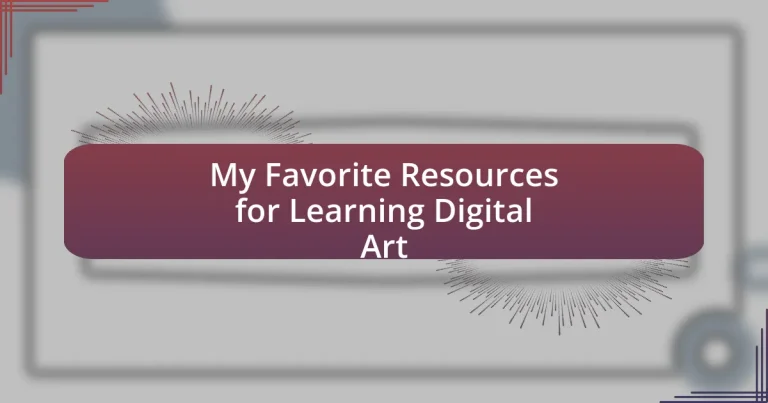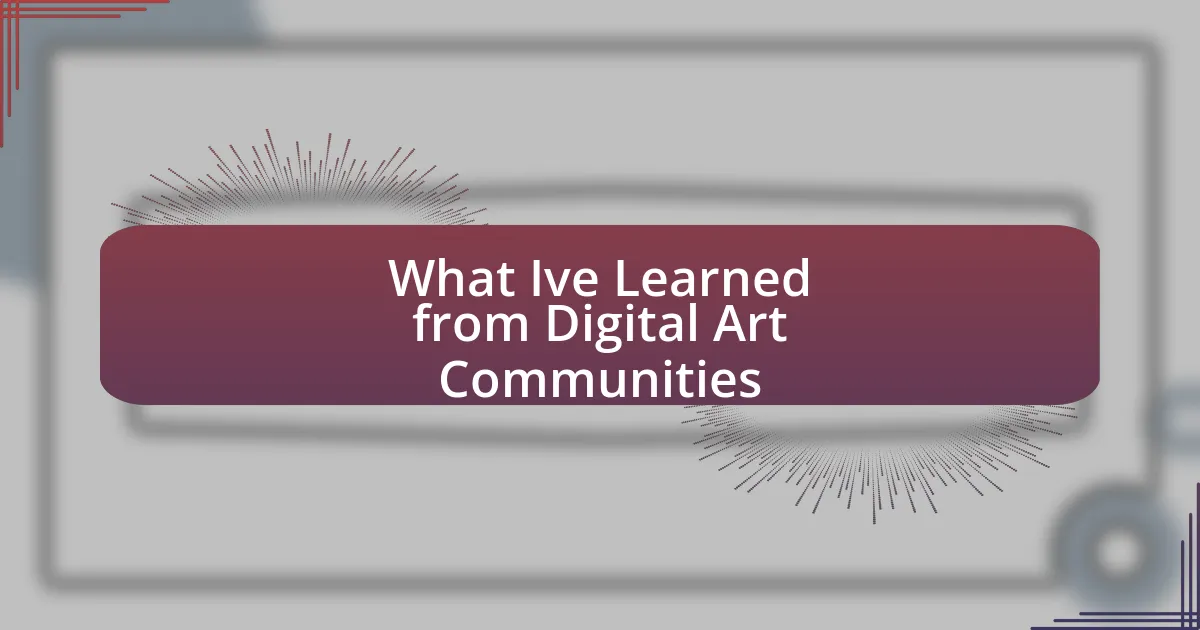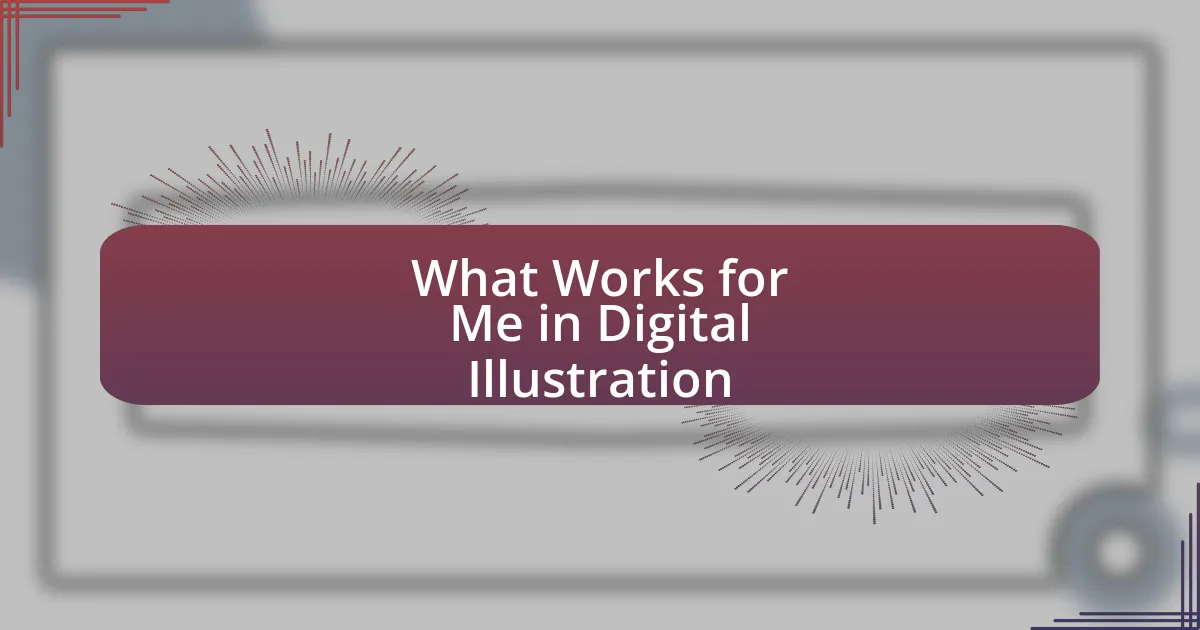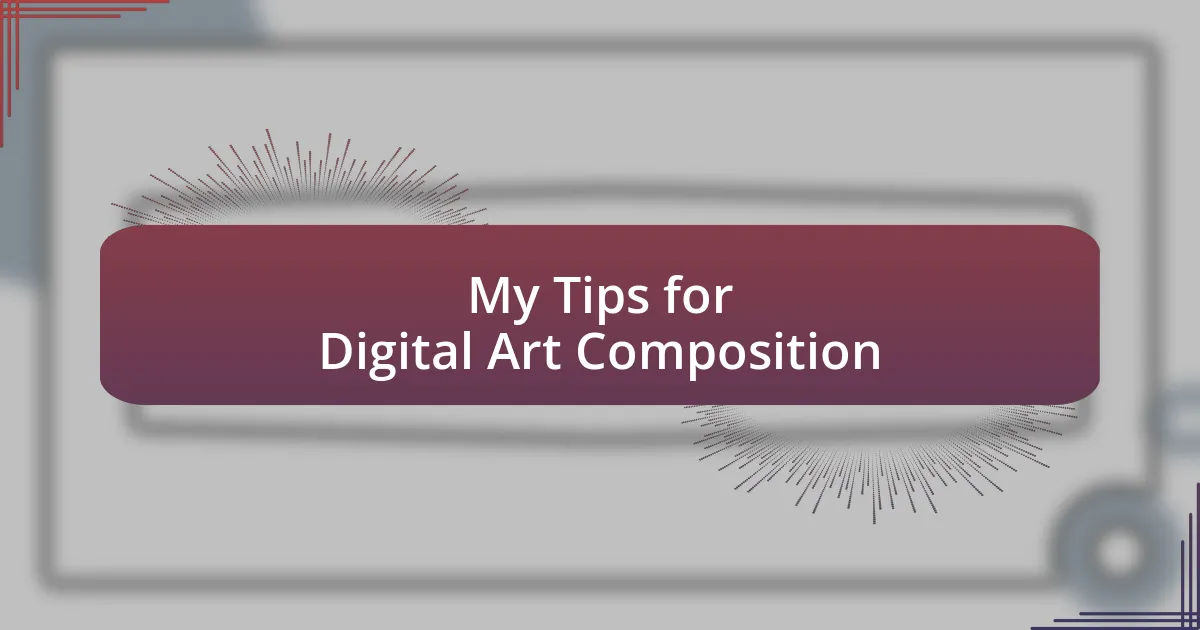Key takeaways:
- Digital art combines creativity and technology, making art more accessible to everyone with a device.
- Essential tools for digital artists include a drawing tablet, stylus, and art software, which enhance creativity and productivity.
- Online courses and YouTube channels are valuable resources for learning and improving digital art skills, fostering community and inspiration.
- Engaging with digital art communities and forums provides support, feedback, and motivation, helping artists connect and grow.
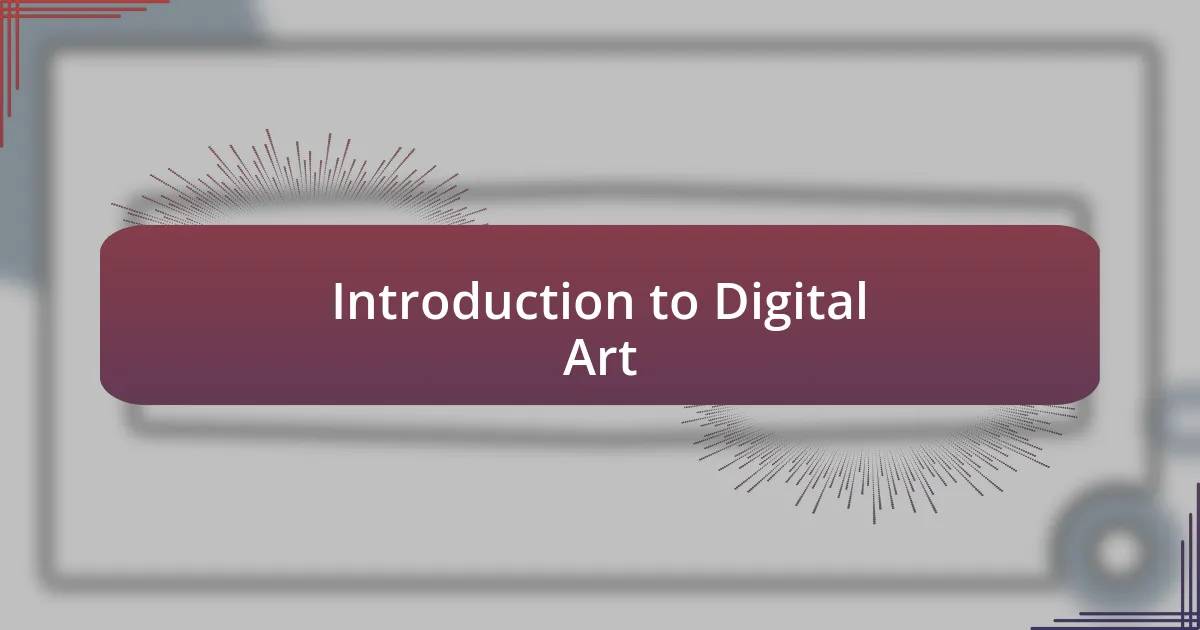
Introduction to Digital Art
Digital art is a captivating blend of creativity and technology that allows artists to express themselves in innovative ways. I still remember my first experience with a drawing tablet; the feeling of drawing directly on the screen was exhilarating. Have you ever found yourself lost in colors and shapes, wondering what new worlds you could create?
What excites me about digital art is its accessibility. Unlike traditional mediums that often require specific materials and tools, digital art allows anyone with a device to start creating right away. I often encourage my friends who are hesitant to dive into art by reminding them that every masterpiece begins with a single stroke, digitally or otherwise.
As technology evolves, digital art continues to push boundaries, challenging traditional perceptions of art. I frequently find myself inspired by new software and techniques, which makes me wonder—where will digital art take us next? It’s this sense of discovery that fuels my passion and keeps me engaged in the ever-evolving landscape of digital creativity.
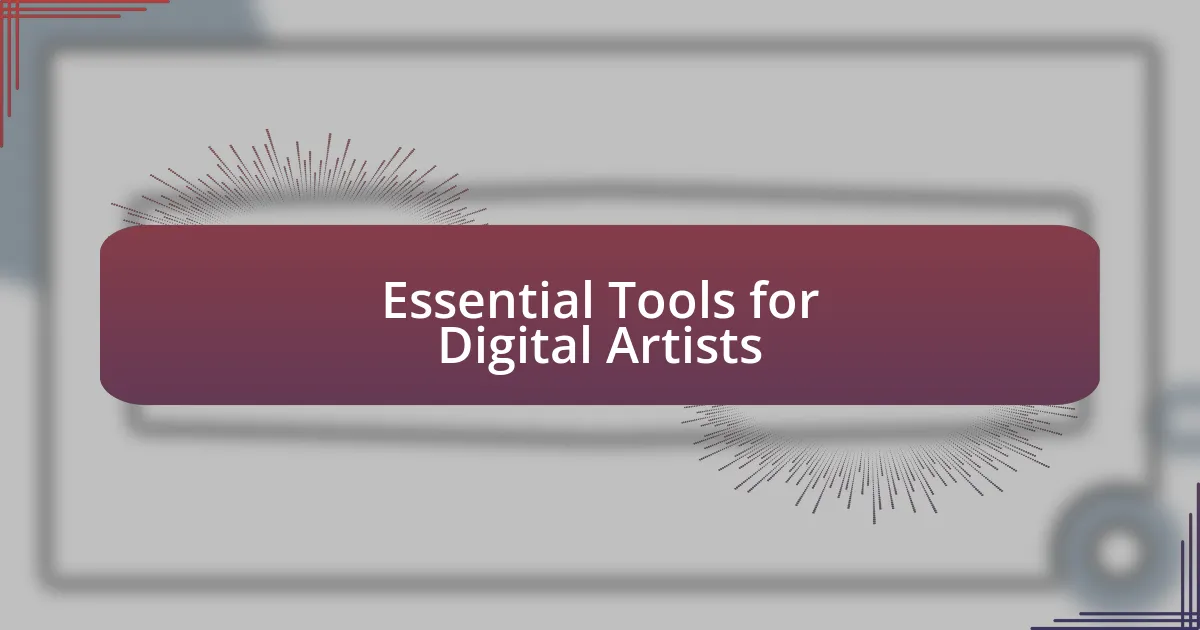
Essential Tools for Digital Artists
Digital artists thrive on the right tools to enhance their creativity, and it’s fascinating how a few essential items can make a world of difference. From my experience, investing in a quality drawing tablet is non-negotiable; the precision and sensitivity can elevate your work. I used to struggle with creating smooth lines until I got my first tablet—it completely transformed my approach.
Here are some essential tools I recommend for digital artists:
- Drawing Tablet: Enhances precision in your work and makes sketching feel more natural.
- Stylus: A reliable stylus can offer varying pressure sensitivity, which is crucial for detailed artwork.
- Art Software: Programs like Adobe Photoshop, Corel Painter, or Procreate provide extensive features to bring your creativity to life.
- Graphic Design Apps: Apps such as Canva or Affinity Designer are great for layout and design projects.
- Color Calibration Tools: Ensure accurate color representation on your screen, especially important for print projects.
Having the right tools not only boosts productivity but also inspires creativity. I remember the first time I stumbled upon a color palette generator; it opened up new avenues for blending hues I had never considered before. Each tool has the potential to change how you create, and choosing the right ones can be a game-changer for any artist.
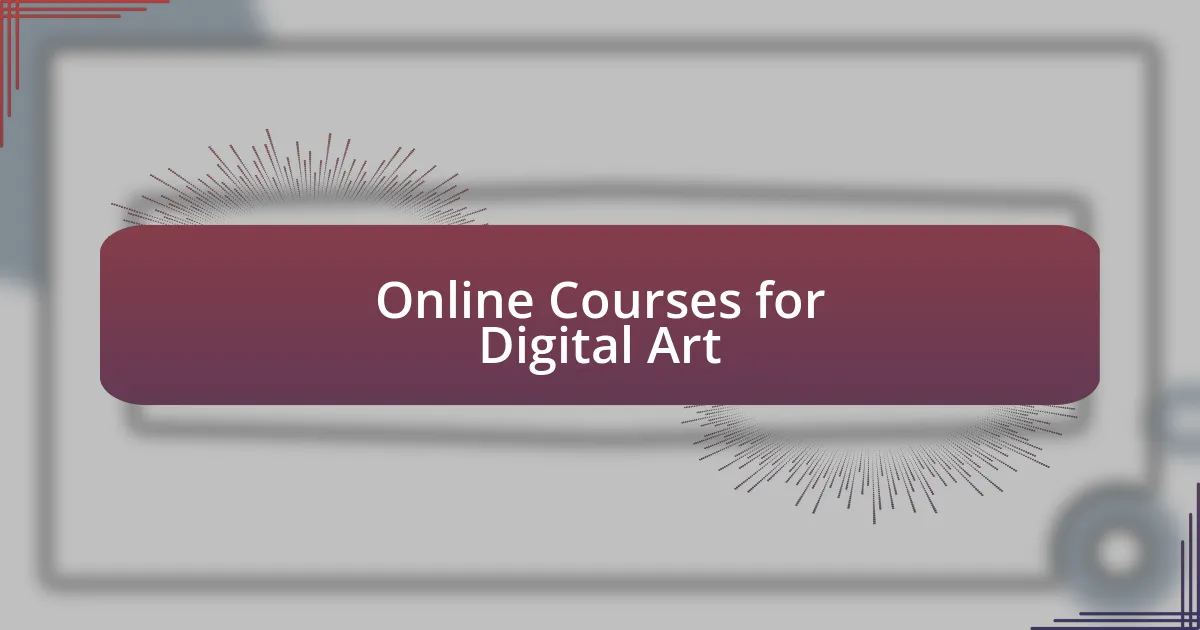
Online Courses for Digital Art
Online courses for digital art are a fantastic way to enhance your skills at your own pace. Personally, I’ve taken several courses that not only offered structured lessons but also provided valuable feedback from instructors. There’s something empowering about connecting with a community of fellow artists, sharing struggles, and celebrating progress—like when I completed a challenging course and felt a surge of confidence in my abilities.
I’ve found that different platforms cater to various levels of expertise and interests. For instance, courses on Skillshare often lean towards beginners, allowing you to explore various styles without feeling overwhelmed. In contrast, sites like Coursera offer more comprehensive programs that delve deeper into concepts, which I found beneficial when I wanted to refine my understanding of digital painting techniques. Each course I’ve taken felt like a stepping stone that enriched my creative journey.
Exploring these online resources can reveal unexpected gems. I remember stumbling upon a course focused on character design, which reignited my passion for storytelling through art. That course not only taught me practical skills but also helped me rediscover the joy of creating characters with depth and personality. There’s really something special about finding the right course that resonates with your artistic aspirations.
| Platform | Type of Courses |
|---|---|
| Skillshare | Beginner-friendly, diverse topics |
| Coursera | In-depth programs, university-level |
| Udemy | Wide range of prices, varied content |
| Domestika | Creative courses by professionals |
| Proko | Focus on drawing techniques |
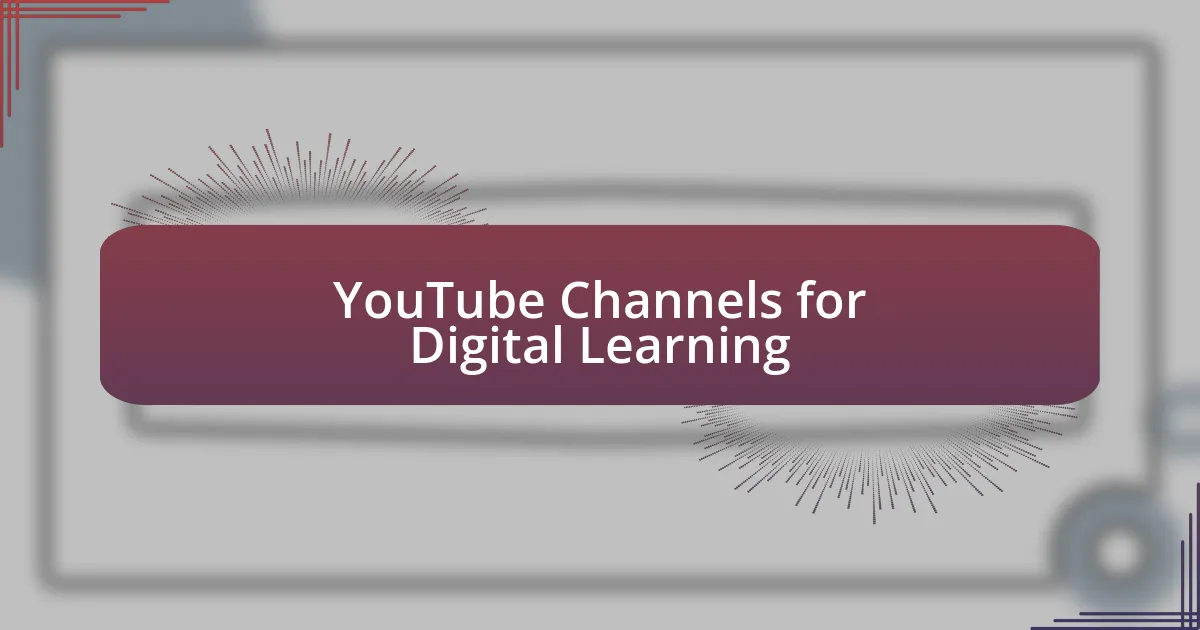
YouTube Channels for Digital Learning
When it comes to YouTube channels, I’ve discovered a treasure trove of digital art tutorials that cater to every skill level. One channel that stands out for me is “Ctrl+Paint,” which demystifies digital painting in a way that feels approachable. I still remember my first lesson on basic shapes; it was like uncovering a new language that made the digital canvas feel more inviting.
Another channel that has made a significant impact on my artistic journey is “Aaron Blaise.” His passion for art is palpable, and his videos on character and creature design have not only inspired me but also helped refine my techniques. I vividly recall watching him animate a bear from scratch; it felt like stepping into his studio, observing the process firsthand, and sparking my creativity in ways I hadn’t anticipated.
If you’re looking for a comprehensive learning experience, “ArtStation” offers a series of interviews and tutorials from top professionals in the industry. This channel not only provides practical skills but gives insight into the artists’ journeys. Have you ever wondered how the pros tackle their creative blocks? Watching these artists share their struggles and successes reminds me that every artist has a story, making the world of digital art feel more connected and accessible.
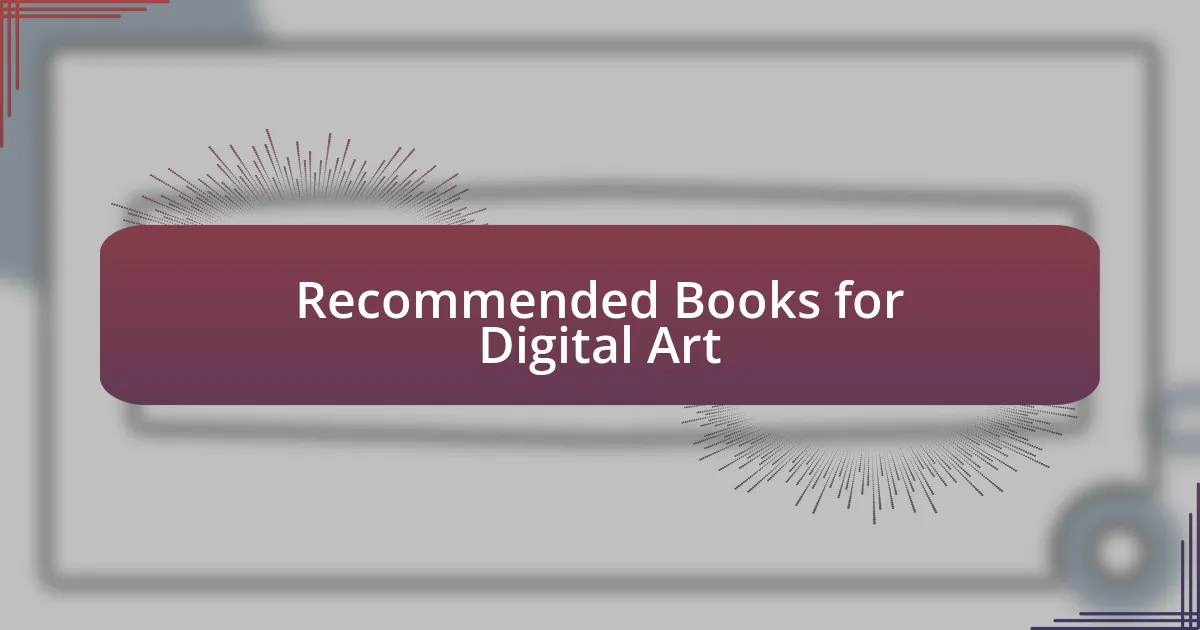
Recommended Books for Digital Art
When it comes to books that have shaped my understanding of digital art, “Digital Painting Techniques” by 3DTotal Publishing stands out. This book didn’t just present techniques; it opened my eyes to the possibilities of blending traditional art with digital tools. I remember the thrill of experimenting with the color theories discussed in the book, transforming my art in ways I hadn’t imagined before.
Another significant read is “The Digital Artist’s Handbook” by Paul F. O’Conner. I found this book invaluable for grasping the fundamentals of composition and color theory. The practical exercises gave me the push I needed to step out of my comfort zone. Have you ever felt stuck creatively? This book offers methods that helped me break through that creative wall, making my practice more dynamic and fulfilling.
If you’re interested in exploring a more conceptual side of digital art, “Concept Design for the Modern World” by Stephen Anderson is a must-read. This book emphasizes the thought process behind art creation. I was particularly inspired by the section on developing original concepts; it taught me that every great piece starts with a single idea, elevating my approach to brainstorming and planning my projects. How do you cultivate your ideas? This book provides the tools to turn those sparks into incredible visual stories.
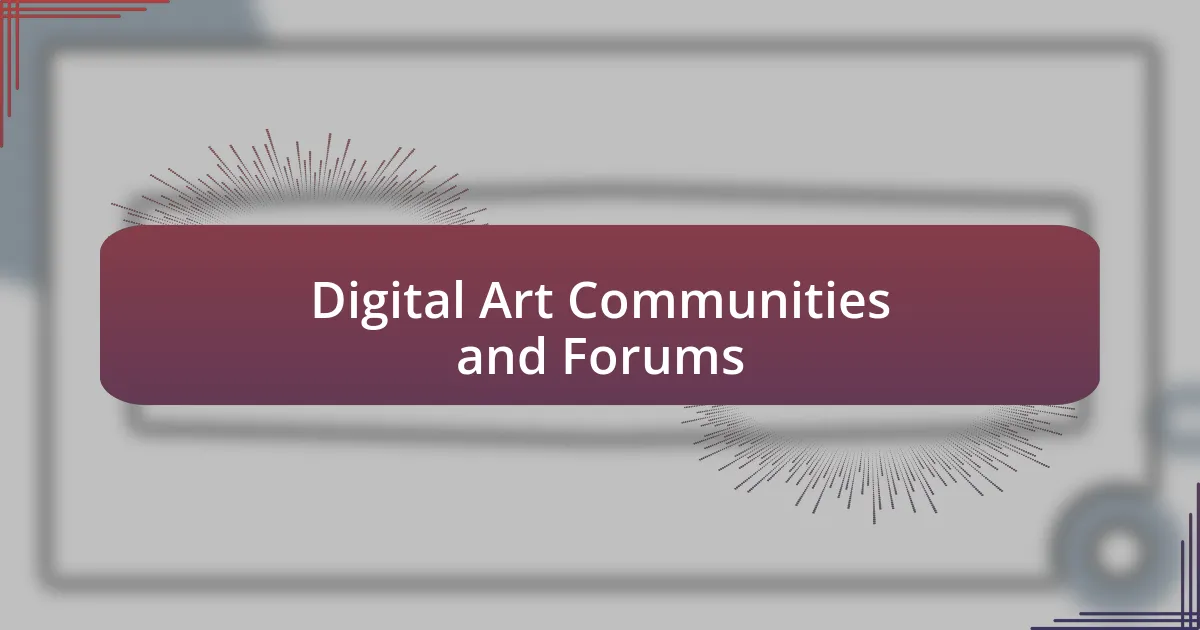
Digital Art Communities and Forums
Digital art communities and forums provide a vibrant space for artists to connect, share, and grow. I remember my first experience in an online forum, where I shared my work and received both constructive feedback and encouragement from fellow artists. It was a reminder that no artist is an island; we thrive on the support and inspiration of others. Have you ever felt isolated in your creative journey? Engaging with a community can be a game-changer.
I’ve found platforms like DeviantArt and ArtStation to be immensely beneficial for networking. Not only do they allow me to showcase my art, but they also expose me to diverse styles and techniques from artists around the world. There was a time when I stumbled upon a piece that completely transformed my approach to shading; it was exhilarating to learn from someone else’s expertise. This kind of interaction fosters a sense of camaraderie that fuels motivation and keeps my passion alive.
Beyond the major platforms, smaller forums like conceptart.org offer a more personal vibe. I recall joining a weekly challenge on this site and, although I felt apprehensive at first, it sparked my creativity in ways I hadn’t expected. Participating in these challenges pushes me to explore new styles and ideas while forming friendships with like-minded individuals. Have you considered joining a challenge to stretch your artistic limits? The benefits may surprise you!

